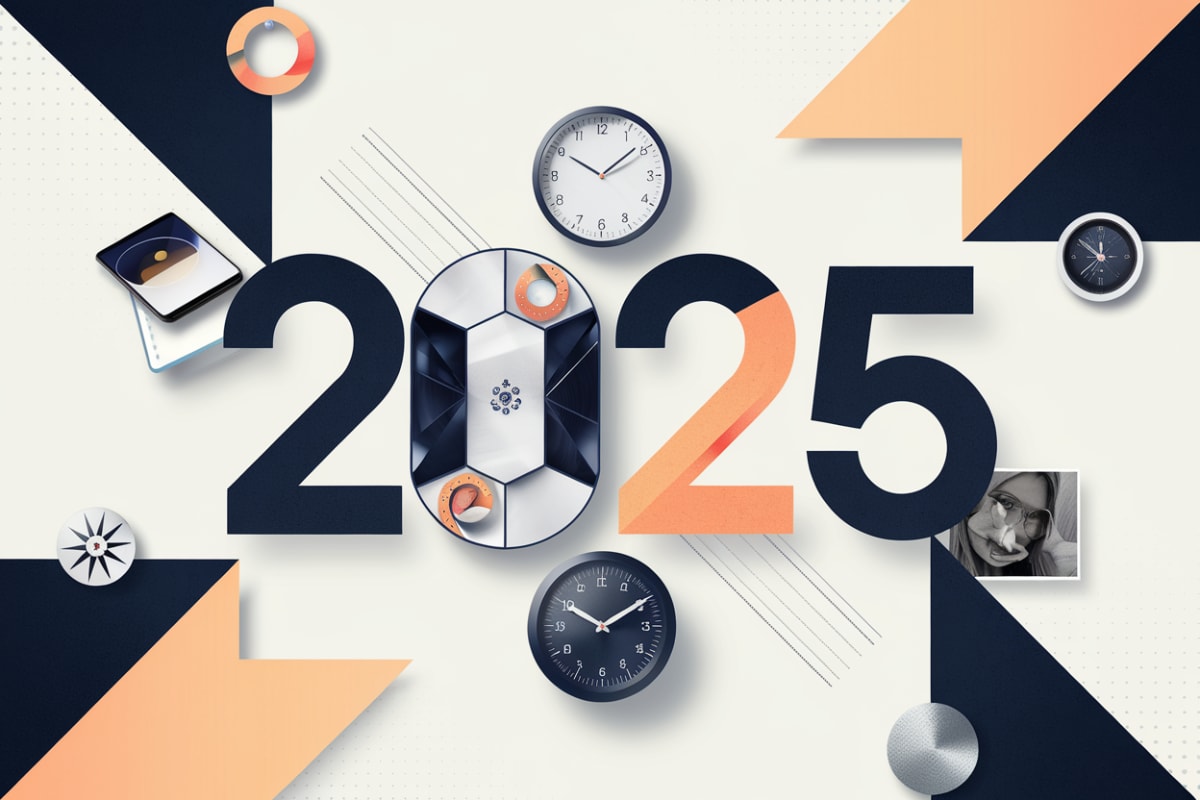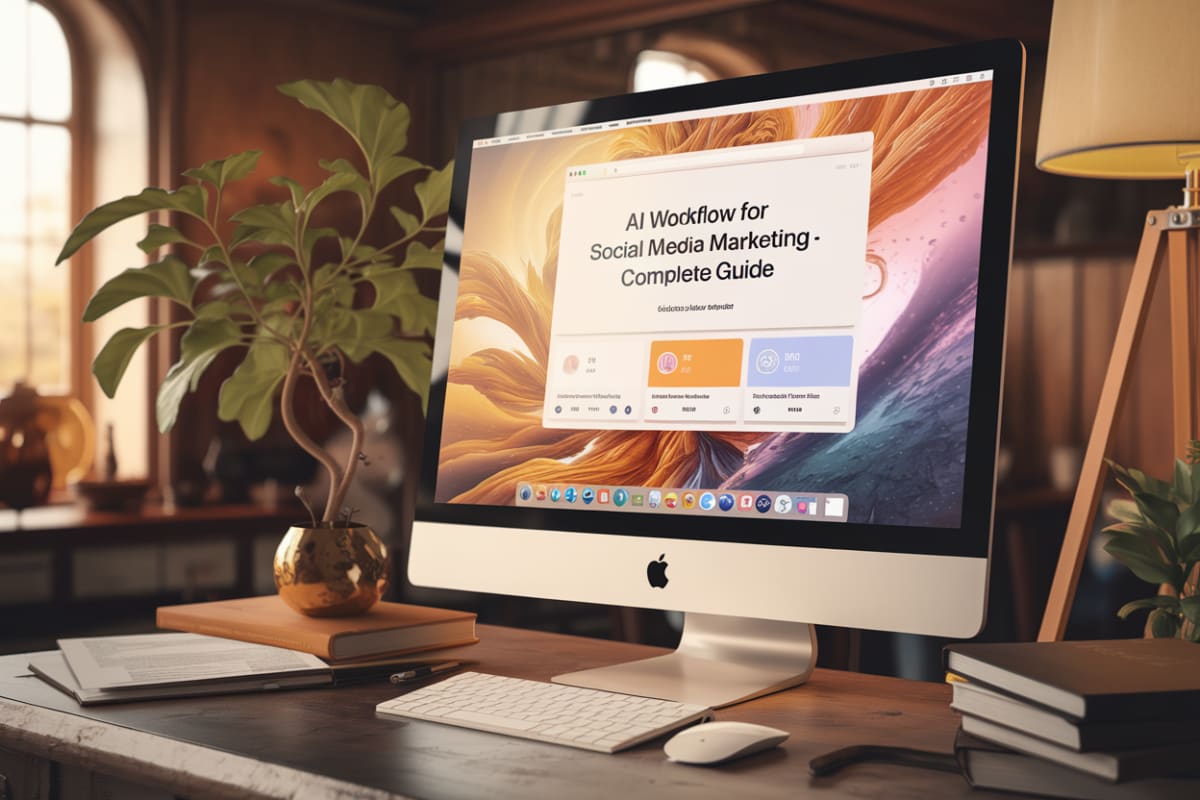Instagram Benchmarks 2025
This article targets the keyword "Instagram Benchmarks 2025" and provides insights into expected engagement rates, industry variations, reach, optimal posting times, strategies for improvement, key metrics for success, and the influence of Instagram's algorithm.
What are the Instagram engagement benchmarks for 2025?
Instagram Engagement Rates
As of 2024, Instagram's average engagement metrics offer insight into expected benchmarks for 2025. Here are key data points:
- Photo Posts: Average engagement rate of 2.69%; static images continue to resonate well, likely maintaining strong engagement into 2025.
- Video Posts: Engagement rate around 2.21%; video content remains effective, though fluctuations may occur due to evolving preferences.
- Carousel Posts: Average engagement rate of 1.16%; multi-image posts provide value but do not reach the engagement levels of photos or videos.
- Reels: Currently, Reels average an engagement rate of 1.23%; with growing emphasis on short-form content, this rate is projected to remain significant in 2025 as Instagram prioritizes Reels in its algorithm.
User Interaction Trends
- Engagement rates depend on content quality, posting consistency, and effective hashtag use. As brands and creators refine strategies, these factors will gain heightened importance in 2025.
- Algorithm changes mean content that encourages interaction—likes, comments, shares, and saves—will be critical for success on the platform.
Influencer Marketing
- Influencer marketing remains robust, with approximately 46.7% of brands utilizing it for audience engagement. This trend is expected to continue, driving engagement rates across various content types.
How do Instagram benchmarks vary by industry in 2025?
General Instagram User Demographics
- User Base: Instagram is expected to have over 2.5 billion monthly active users by the end of 2023, with significant engagement from users aged 18-34. This demographic influences how different industries approach their marketing strategies, tailoring content to resonate with this age group Source: EmbedSocial.
Engagement Rates and Content Types
- Content Engagement: Instagram Reels have been highlighted as one of the most engaging formats, with an average engagement rate of 1.23% in 2023, higher than traditional posts like images and carousels Source: Adam Connell. Industries focusing on visual and video content, such as fashion and beauty, may experience higher engagement compared to those relying heavily on static images.
Industry-Specific Insights
- Beauty and Fashion: These industries typically see higher engagement rates due to the visual nature of their products, aligning well with Instagram's audience demographics. Beauty brands often leverage influencers who resonate with younger audiences to maximize reach and engagement Source: Brandwatch.
- Food and Beverage: The food industry utilizes Instagram's visual platform to showcase vibrant imagery of dishes, leading to increased user engagement. Restaurants and food brands use Instagram Stories and Reels to drive interaction and promote new menu items effectively.
- Travel and Hospitality: Travel brands focus on aspirational imagery that captivates users. User-generated content and influencer partnerships enhance engagement and drive bookings, particularly through visually appealing content Source: Hootsuite.
What is the average reach on Instagram in 2025?
Current Insights on Instagram Reach
As of 2024, specific data on Instagram's average reach for 2025 is unavailable. However, several trends and projections could influence reach metrics:
User Base and Engagement: Instagram has nearly 3 billion monthly active users, making it one of the largest platforms for social media marketing. The potential reach is significant, though specific figures will depend on ad targeting and campaign performance Source: Social Media Examiner.
Declining Organic Reach: Reports indicate that organic reach across social platforms, including Instagram, is declining, necessitating a stronger reliance on paid advertising to enhance visibility and engagement Source: Social Media Today. Businesses may need to invest more in advertising to achieve desired reach levels.
AI and Advertising Optimization: Meta's introduction of AI-driven features aims to improve ad targeting and optimization, significantly affecting reach. Marketers may enhance their ability to reach specific audiences effectively Source: Social Media Examiner.
Increased Competition: As digital advertising expenditures rise, competition for ad space will intensify, potentially affecting average reach. Global advertising revenue is projected to reach around $989.8 billion by the end of 2024, with a significant portion directed toward platforms like Meta Source: Jeff Bullas.
Influencer Marketing Growth: The influencer economy is predicted to expand from $250 billion in 2023 to nearly $500 billion by 2027, leading to increased brand collaborations and organic visibility on platforms like Instagram Source: Forbes.
In summary, while specific average reach figures for Instagram in 2025 are unavailable, trends indicate that businesses should prepare for a more competitive and potentially paid-focused environment to achieve effective reach.
What are the best times to post on Instagram in 2025?
Best Times to Post on Instagram
Based on data from multiple sources, the following times are generally regarded as optimal for posting on Instagram in 2025:
- Monday: 11 AM - 12 PM, 5 AM, 12 PM, 1 PM
- Tuesday: 9 AM - 10 AM, 8 AM - 10 AM
- Wednesday: 11 AM, 9 AM - 11 AM, 5 AM - 6 AM
- Thursday: 11 AM - 12 PM, 4 AM, 6 AM
- Friday: 4 PM, 2 PM, 3 PM, 4 AM
- Saturday: 9 AM, 10 AM - 1 PM
- Sunday: 7 PM, 5 PM - 7 PM, 8 PM
Key Insights from Various Studies
Buffer Analysis: Analyzed over 5.5 million posts; found that the best posting times are generally between 7 AM and 8 AM on weekdays, with significant engagement spikes on Thursdays and Fridays around 4 PM. Weekend engagement peaks at 7 AM on Saturdays and 7 PM on Sundays Buffer.
Shopify: Consolidated research suggests effective posting times of 11 AM - 12 PM on Mondays and Thursdays, with Tuesday mornings and Friday afternoons also highlighted as strong options Shopify.
Hopper HQ: Found that the best time to post varies slightly by day, highlighting 9 AM - 10 AM on Wednesdays and 4 PM - 6 PM on Fridays, with lower engagement levels on weekends Hopper HQ.
Later: Claims the overall best time to post is 4 AM, with consistent engagement throughout the early morning hours Later.
Demand Sage: Indicates the best time to post Reels is from 9 to 11 AM on weekdays, while static posts should generally be scheduled for 10 - 11 AM across the week Demand Sage.
These findings illustrate that while some times are more favorable, the best posting schedule will depend on your specific audience's habits and engagement patterns. Utilize Instagram Insights to analyze your audience's activity to refine these general recommendations.
How can businesses improve their Instagram benchmarks in 2025?
Strategies for Improving Instagram Benchmarks in 2025
Create a Consistent Brand Aesthetic
Develop a cohesive brand aesthetic on Instagram using consistent colors, fonts, and image styles. This builds trust and recognition among the audience. For example, brands like Aesop effectively use a consistent visual style that resonates with their target market.Leverage Instagram Stories
Utilize Instagram Stories to share real-time, behind-the-scenes content, fostering authenticity and casual engagement. Brands like Nike often use Stories to showcase product launches or events, engaging their audience without the pressure of polished advertisements.Utilize Interactive Content
Incorporate interactive features such as polls, quizzes, and Q&As to increase engagement. Brands like Starbucks leverage these tools to gather customer feedback, boosting interaction and providing valuable insights into customer preferences.Optimize Profile and Bio
A well-optimized profile is crucial. The bio should clearly convey the brand's value and include relevant keywords, along with a link to the website. An example is Airbnb, whose bio succinctly communicates their mission and includes a call to action.Collaborate with Influencers and Agencies
Working with influencers and Instagram marketing agencies amplifies reach and engagement. Projections indicate the creator economy is expected to grow significantly, making influencer collaborations crucial for connecting with communities in 2025 Forbes.Stay Updated with Algorithm Changes
Keeping abreast of Instagram's algorithm changes is essential. Businesses should adapt their content strategies, especially around the use of Reels and Stories, to maintain visibility. Brands that quickly adopt new features often see increased engagement due to the algorithm prioritizing fresh content.Analyze Performance Data
Using tools like Instagram Insights or third-party analytics platforms is vital for tracking performance metrics such as engagement rates, impressions, and reach. Regular analysis helps identify successful strategies and areas for improvement. For example, Tidal effectively utilizes social listening tools to monitor mentions and improve visibility on platforms like Instagram Brand24.Engage Authentically with the Audience
Authenticity will be key in 2025, with consumers valuing genuine connections with brands. Focus on storytelling and sharing brand values, similar to how Patagonia engages its audience through environmental advocacy and authentic messaging.Automate Engagement with AI
Consider tools like the AI Social Media Coordinator from Enrich Labs. This AI-powered solution autonomously moderates and analyzes thousands of comments and DMs, ensuring a consistent brand voice while freeing your team to focus on strategic initiatives. Clients report over 70% cost savings with its reliable performance and unique customer insights.
By implementing these strategies, businesses can effectively improve their Instagram benchmarks and enhance their overall presence on the platform.
What metrics should be tracked for Instagram success in 2025?
Key Metrics for Instagram Success in 2025
To effectively measure Instagram success in 2025, marketers should focus on several critical metrics that encompass engagement, visibility, and reputation.
1. Engagement Metrics
Engagement refers to how users interact with your content. Key engagement metrics include:
- Likes: The simplest form of engagement, indicating how many users appreciate your content.
- Comments: Reflects deeper engagement as users share their thoughts.
- Shares: Indicates content virality, showing how often users share your posts with their followers.
- Saves: Shows content value, as users save posts for future reference.
- Direct Messages (DMs): Engaging with users through DMs can indicate strong interest in your content or brand.
- Story Replies: Interactive stories can spur direct engagement from followers.
For example, a successful campaign might see a 20% increase in comments and shares compared to previous months, highlighting effective content strategies Brand24.
2. Visibility Metrics
Visibility metrics help understand how many users see your content, including non-followers:
- Social Media Reach: This metric tracks the total number of unique users who have seen your content. A wider reach indicates greater brand awareness.
- Impressions: Total number of times your content is displayed, regardless of clicks. This helps assess overall exposure.
- Volume of Mentions: How often your brand is discussed across social media platforms, a vital indicator of brand presence and reputation.
For instance, using tools like Brand24, a brand could measure how a marketing campaign increased their social media reach by 50% over a quarter Brand24.
3. Reputation Metrics
Reputation metrics gauge public sentiment towards your brand:
- Sentiment Analysis: This assesses the overall sentiment of comments and mentions, whether positive, negative, or neutral. Understanding public perception can inform strategy adjustments.
- Share of Voice: This metric compares your brand's mentions against competitors in the same space, helping position your market presence.
An example of utilizing sentiment analysis could be a brand tracking the sentiment of mentions during a product launch, adjusting their marketing messaging based on real-time feedback.
Tools and Methods for Tracking
- Utilize Instagram Insights to access basic engagement metrics like likes, comments, and reach. This is essential for businesses with a professional account.
- For more comprehensive tracking, consider external tools like Brand24 or Enrich Labs’ AI Social Media Coordinator, which can monitor mentions and reach across multiple platforms, providing a holistic view of brand visibility.
By consistently tracking these metrics, brands can optimize their content strategies to improve engagement, increase visibility, and enhance their overall reputation on Instagram.
How does Instagram's algorithm affect benchmarks in 2025?
Overview of Instagram's Algorithm in 2025
Instagram's algorithm personalizes user experiences, significantly influencing content visibility and engagement metrics. As of 2025, the algorithm prioritizes user engagement through various factors, setting the stage for new benchmarks in social media marketing.
Key Factors Influencing Content Distribution
User Activity: The algorithm ranks posts based on user interactions such as likes, comments, shares, and saves. The more frequently a user interacts with certain types of content, the more similar content is shown to them. This directly impacts engagement rates, as posts that foster interaction perform better.
- Example: Brands focusing on creating interactive content (like polls or engaging questions) see significant increases in engagement metrics.
Content Quality and Originality: High-quality and original content is prioritized over reposts or low-effort creations. This change has led to a benchmark shift, where creators must invest in content quality to maintain visibility.
- Case Study: A beauty brand that shifted its strategy to produce high-quality, original video content saw a 40% increase in engagement compared to posts that reused content from other sources.
Engagement Rate: Posts that accumulate high engagement shortly after posting are favored. Timing and content type matter significantly, as posts that resonate with audiences tend to perform better.
- Insight: Businesses are encouraged to analyze peak activity times using analytics tools to time their posts effectively, thereby enhancing engagement rates.
AI-Driven Recommendations: With the incorporation of AI, Instagram's algorithm personalizes content recommendations, affecting how content is distributed across user feeds.
- Example: Brands using AI tools to analyze user preferences and tailor their content strategy report increased visibility and engagement.
Conclusion on Benchmarks
While specific numerical benchmarks likely vary by industry and audience, the overarching trend indicates that businesses must focus on creating engaging, high-quality content tailored to audience preferences to meet or exceed these evolving benchmarks. Brands that successfully adapt to these algorithm changes will likely experience sustained organic growth and improved engagement rates in 2025 and beyond.
To learn more about how the AI Social Media Coordinator can streamline your social media interactions and boost your brand's performance, visit Enrich Labs.




